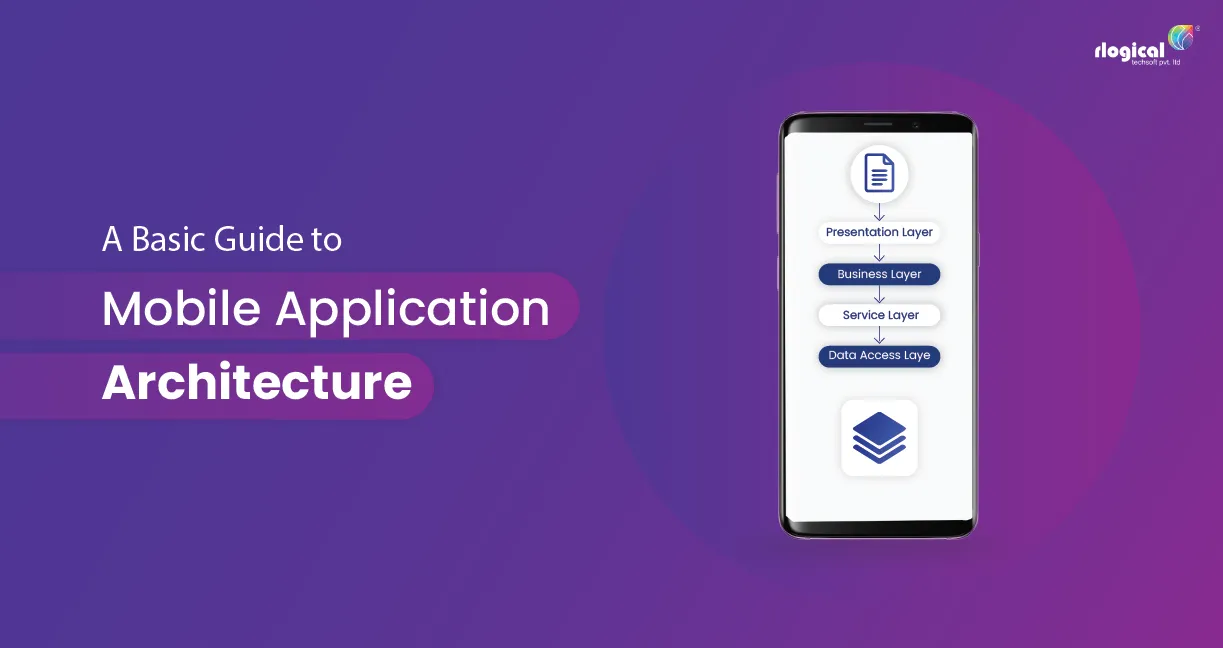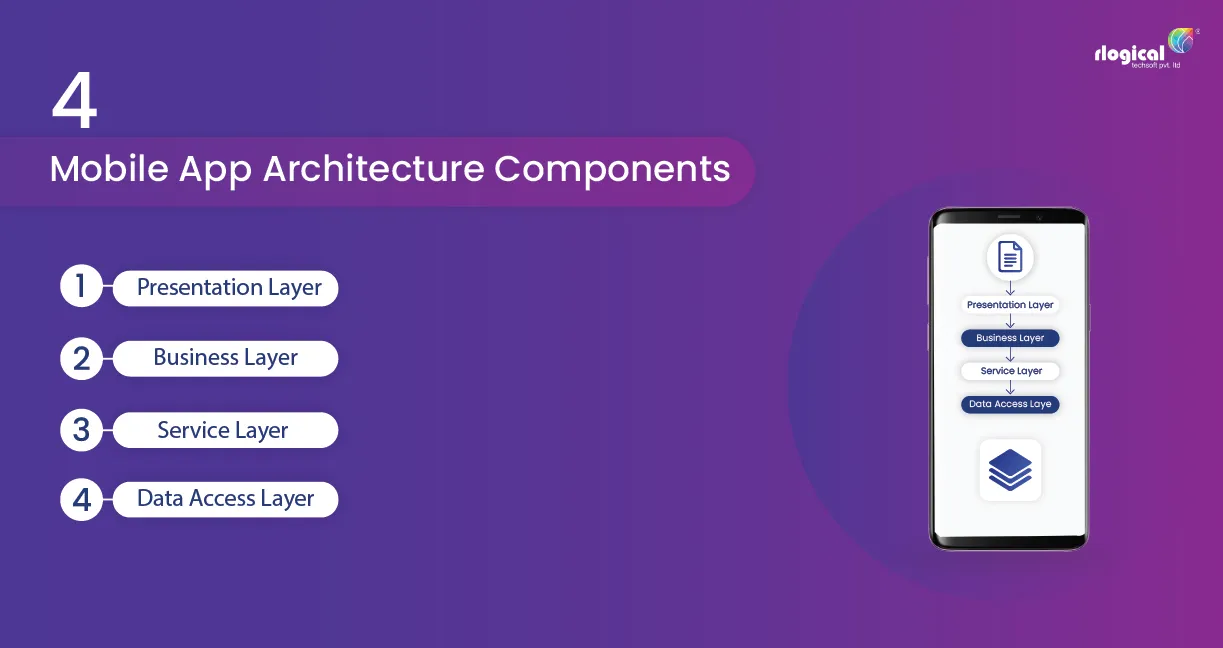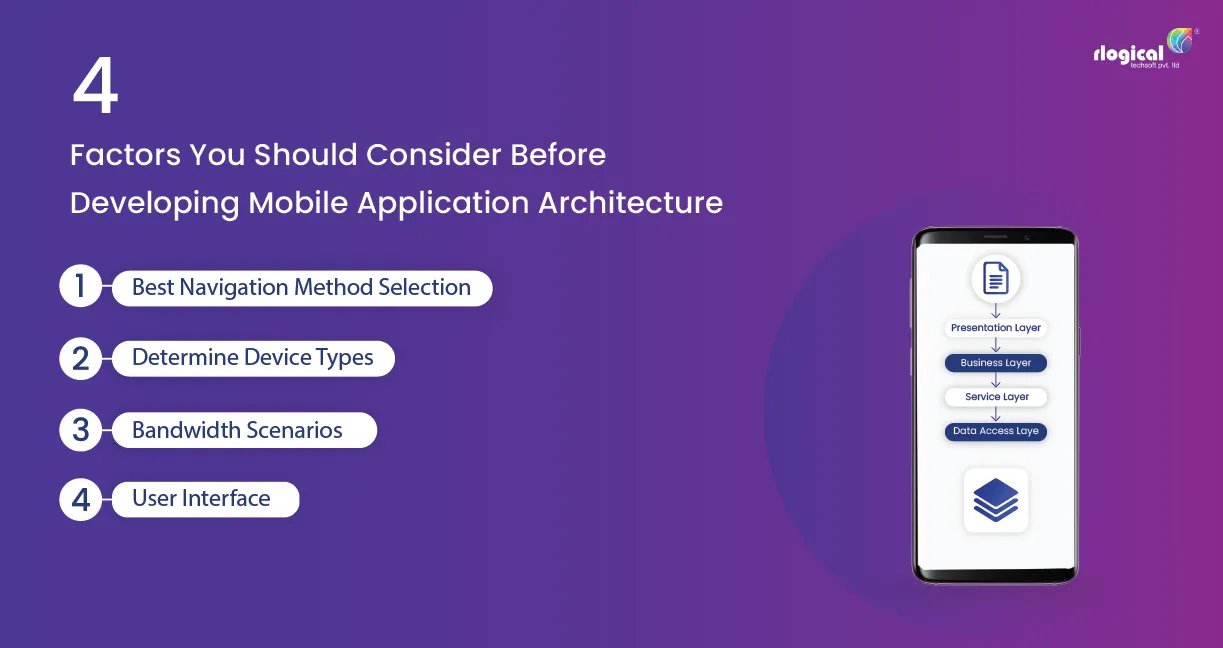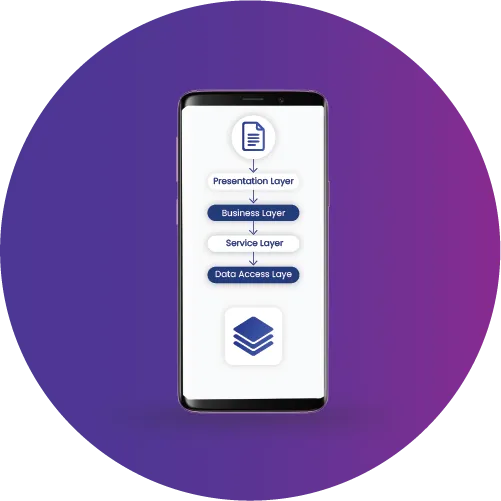
A strong foundation is important for the development or construction of mobile apps. Business enterprises across the globe are concentrating on mobile app development to reach out to their target audience more proactively. They aim to solve the problems of people and collaborate with one shared purpose. This makes today’s world competition quite fierce. Apps are the best ways to generate revenue, like charging some money for using apps or premium features or selling advertising space, etc.
When the competition in the global marketplace is tough, you need to have a better mobile application architecture to succeed. Lacking an understanding of the mobile application architecture can make an app fail. In mobile app planning, you should ensure that each component is stable and well-built. If you have no idea about mobile application architecture, this is the right place to know everything.
What Does Mobile Application Architecture Mean?
Mobile application architecture refers to the patterns or techniques needed to create a mobile app based on vendor-specific or industry standards. Application architecture provides a roadmap and best practices for building a well-structured app. If the mobile app architecture is missing some important parts, it could become an obstacle to its success. The crafting complexity of high-quality architecture depends on the app size. A proper architecture can save time and cost because various models work better in multiple scenarios.
The basic thing to know before app creation is to divide the architecture into several layers that will help mobile app development companies understand the architecture from which it is made.
Must Read: Mobile App Developers – Demand to Hire Mobile App Developers
4 Mobile App Architecture Components

1. Presentation Layer
This layer’s objective is to explain the way the app needs to be shown to users. While composing the layer, mobile app developers should identify UI components based on specific client’s needs.
Moreover, the deployment restrictions of the client requirements need to be considered. The data format selection and usage of strong safeguards of data validation are necessary to protect the app from invalid or unauthorized data entry. User experience considerations also help in mitigating the need for safeguards of this presentation layer. An excellent architecture is sure when the presentation layers are updated or replaced easily with not many changes to all data formats.
2. Business Layer
It is the layer that encapsulates the definition of the app’s data uses, data processing, and resourcing the data for presentation layer representation. It includes the logic of business or the processing type that the app requires to perform on that data for making it meaningful. A business layer consists of required business entities, workflows, business components, and the two sub-layers known as service layers and domain models.
3. Service Layer
It is a new component of app architecture and stays between the layer of data access and presentation. This layer is where one specifies the interface of service, enforces it, and supplies the translator components. These translator components translate all data formats present between server infrastructure’s business layer and external data contract. This layer is intended for decoupling the presentation out of the business logic models specifics. It means that multiple presentation layers can be there like mobile, web, VR, etc. It is made of two components message types and service interfaces.
4. Data Access Layer
It is a layer for providing safe data transactions. To do so, the mobile app development companies require reflecting on data maintenance while guaranteeing that this layer can be changed easily with business requirement updates. It includes components like access components, service agents, and utilities. It has two subheads: the persistence layer, which provides simplified access to data, and the network layer that offers a network communication path and makes networking calls.
Must Read: Top 12 Benefits of Native Mobile App for Business
4 Factors You Should Consider Before Developing Mobile Application Architecture

1. Determine Device Types
Smartphones have different categories, and the type of mobile is determined by the operating system on which it runs. iOS and Android are both different, so it is important to decide before choosing the app architecture. You must consider the resolution and screen size, CPU characteristics, storage capacity, memory, and framework of the development tool.
2. Bandwidth Scenarios
Many times, internet connectivity can be poor. In such cases, bandwidth scenarios can largely help. Low internet speed frustrates the users, and sometimes, they can abandon the app. So consider using the poor internet network for mobile app development.
3. Best Navigation Method Selection
The important factor is the application navigation method. But the priorities and needs of customers will be fulfilled only by picking the best navigation method as it has a big impact on users’ experiences. You should pick scroll view, single view, gesture-based navigation, modular controller, search-driven navigation, and tab controller for getting the best one.
4. User Interface
UI is essential for an app’s success, and it provides seamless interaction with the application. An intuitive UI can enhance the user experience.
Must Read: Why is UI/UX important for Mobile App Development?
Conclusion
Mobile application architecture is considered the mobile app’s backbone that provides functionalities, user experience, and features. So, designing the app architecture for mobiles is the crucial and foremost step that can take the app to greater levels of success and benefit you in flourishing your business.
Jatin Panchal
Jatin Panchal is the Founder & Managing Director at Rlogical Techsoft Pvt. Ltd. For more than a decade, he has been fostering the organization's growth in the IT horizons. He has always bestowed personalized approaches on .NET, PHP, Flutter, and Full-Stack web development projects. From startups to large enterprises, he has empowered them to accomplish business goals. By delivering successful industry-driven solutions, he is encouraging the capability of AI, ML, blockchain, and IoT into custom websites and hybrid mobile applications.
Related Blog
- Progressive Web App Development Cost: Accurate Figures Guide
- Top Hybrid App Development Frameworks to Capture 2025 Trends For Your Business
- How Much Does MVP Cost: Factors Influence MVP Development Budget & its Reduction Tips
- Progressive Web App Benefits for Your Business Growth in Future Market
- Flutter for Web App Development: The Cross-Platform Companion For Your Business
Categories
- All
- AI Development Services
- Amazon Web Services (AWS)
- ASP.Net Development
- Azure Web App
- Big Data Analytic
- Customize
- Digital Marketing
- Drupal Development
- E-commerce web development
- Education Mobile App Development
- Enterprise Application
- Event Management App Development
- Fintech
- Fitness App Development
- Food Delievery
- Front-End Development
- Grocery App Development
- Healthcare App Development
- Hire Dedicated Developers
- Hotel Booking App
- IT Industry
- JavaScript Development
- Mobile App Development
- On Demand App Development
- On Demand Healthcare App Development
- PHP Development
- POS Software Development
- Real Estate Mobile App Development
- Retail Business App Development
- Salesforce
- Social Media Development
- Software Development
- Technology
- Transportation App Development
- UI/UX Design
- Web Design
- Web Development
- Web Services
- Web/Data Scraping Services
- WordPress




 Jatin Panchal in Mobile App Development
Jatin Panchal in Mobile App Development 





